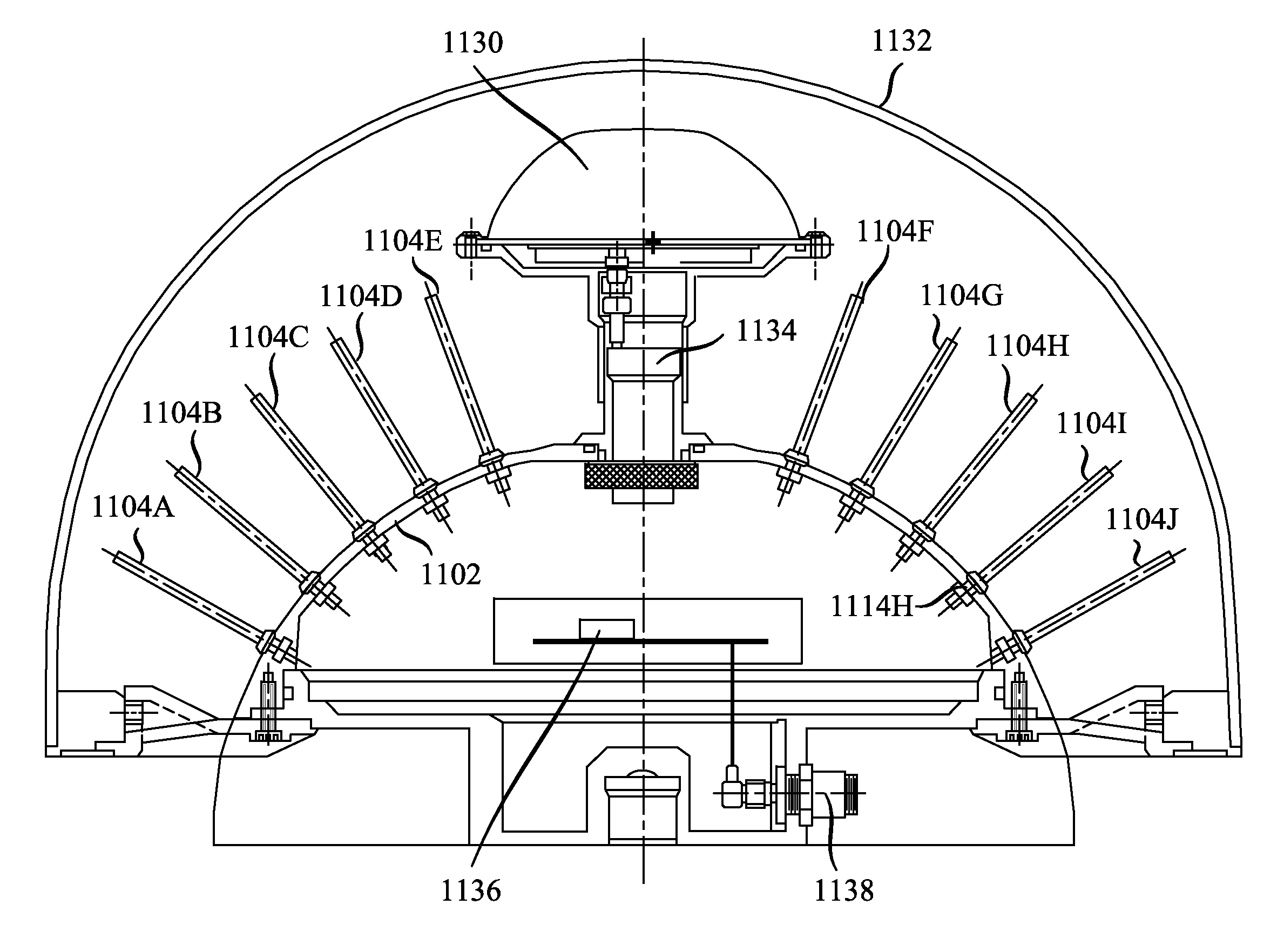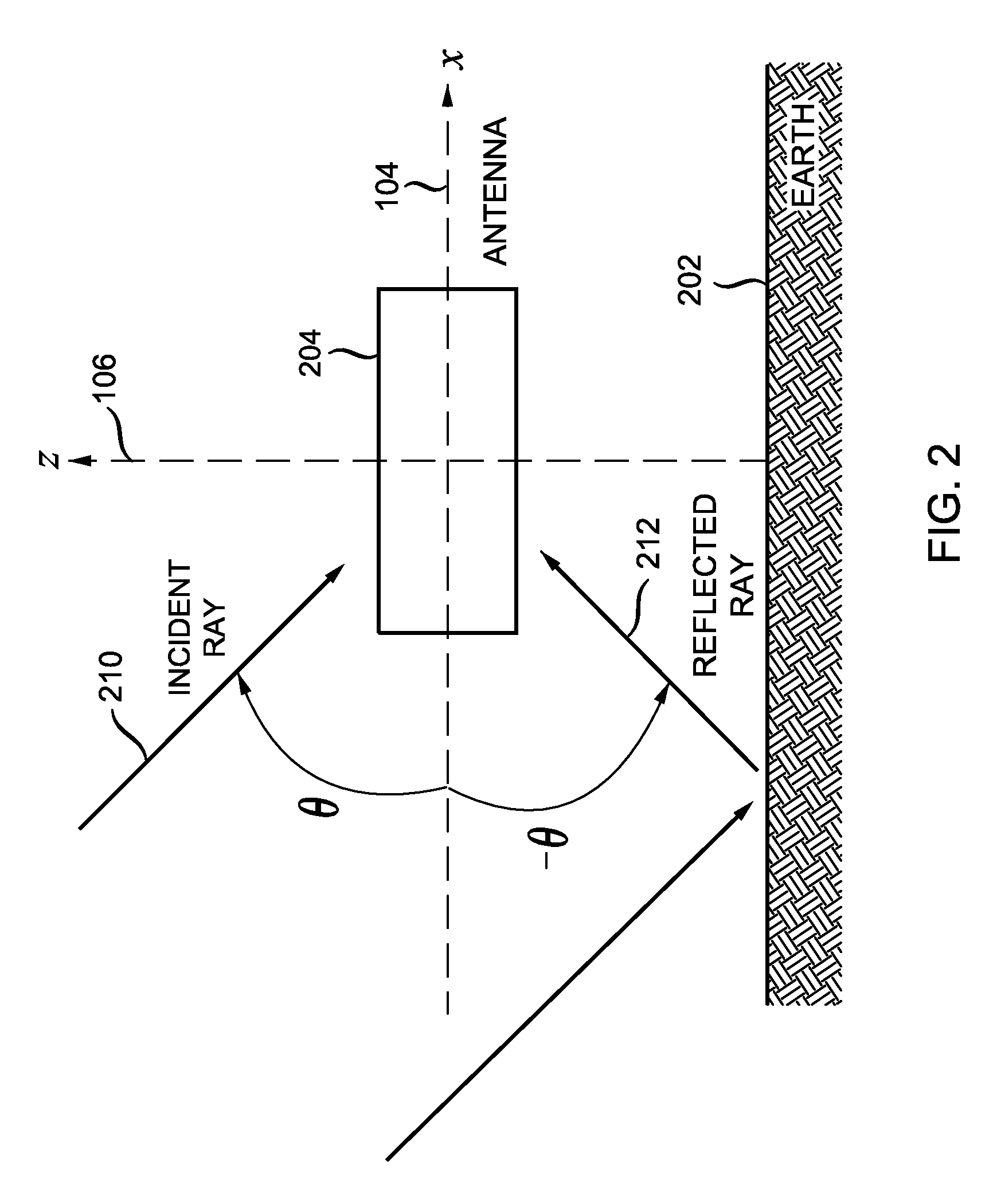Broadband Convex Ground Planes for Multipath Rejection
a convex ground plane and multipath technology, applied in the field of antennas, can solve the problems of limiting the use of flat ground planes, affecting the operation of the entire navigation system, and a major source of positioning errors of multipath reception, so as to reduce the frequency of multipath reception
- Summary
- Abstract
- Description
- Claims
- Application Information
AI Technical Summary
Benefits of technology
Problems solved by technology
Method used
Image
Examples
Embodiment Construction
[0038]Since the polarization of the multipath signals are correlated with the polarization of the line-of-sight signals (as described in more detail below), multipath rejection capabilities of a ground plane can be characterized in terms of linear-polarized signals instead of circular-polarized signals. FIG. 1A and FIG. 1B show perspective views of a Cartesian coordinate system defined by the x-axis 102, y-axis 104, z-axis 106, and origin O 108. As shown in FIG. 1A, the magnetic field H-plane 120 lies in the y-z plane; as shown in FIG. 1B, the electric field E-plane 130 lies in the x-z plane. In the discussion below, modelling is performed with respect to the E-plane. Modelling with respect to the E-plane presents a worst-case scenario, since the multipath rejection capabilities of the antenna with respect to the H-plane are better than or equal to the multipath rejection capabilities of the antenna with respect to the E-plane.
[0039]Geometric configurations are also described with r...
PUM
 Login to View More
Login to View More Abstract
Description
Claims
Application Information
 Login to View More
Login to View More - R&D
- Intellectual Property
- Life Sciences
- Materials
- Tech Scout
- Unparalleled Data Quality
- Higher Quality Content
- 60% Fewer Hallucinations
Browse by: Latest US Patents, China's latest patents, Technical Efficacy Thesaurus, Application Domain, Technology Topic, Popular Technical Reports.
© 2025 PatSnap. All rights reserved.Legal|Privacy policy|Modern Slavery Act Transparency Statement|Sitemap|About US| Contact US: help@patsnap.com



